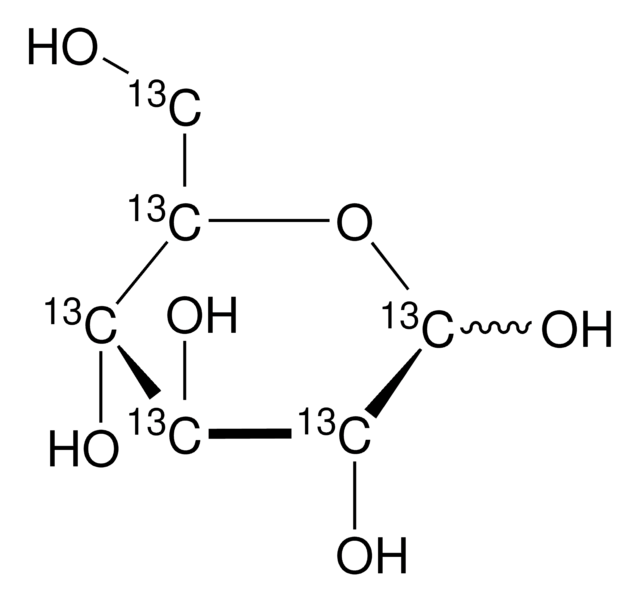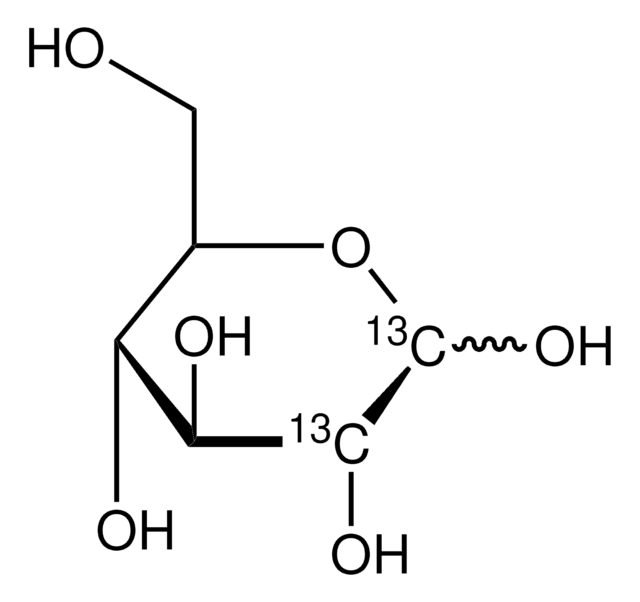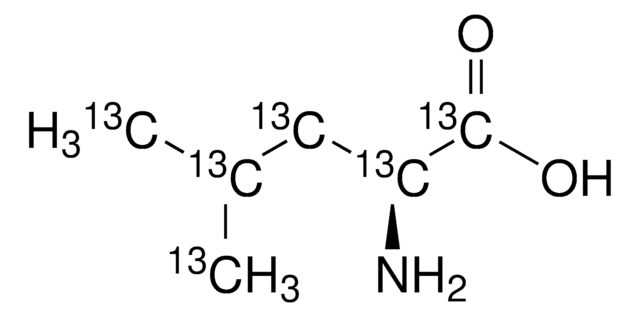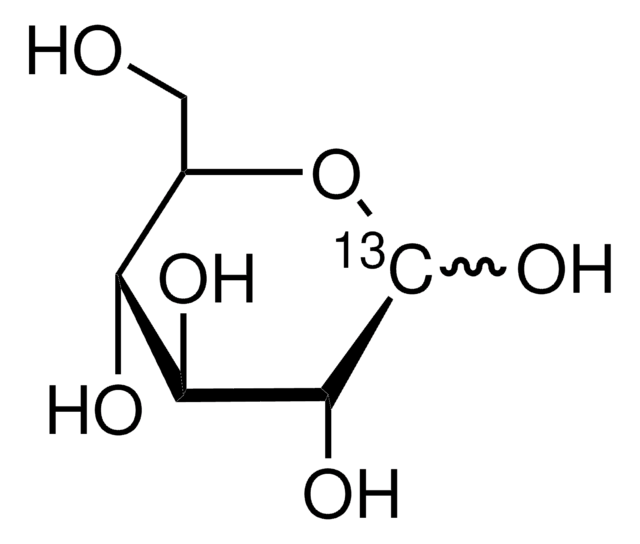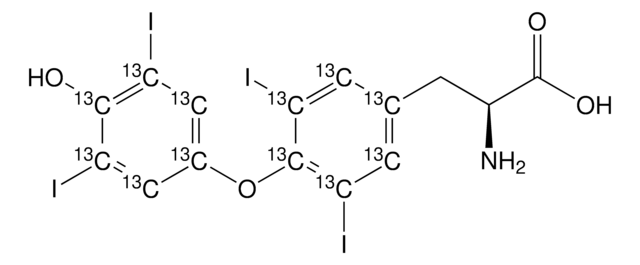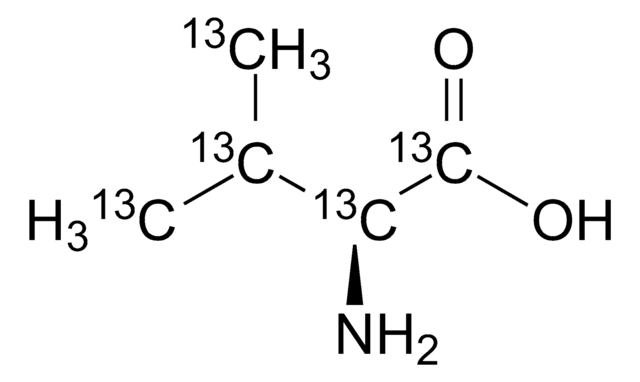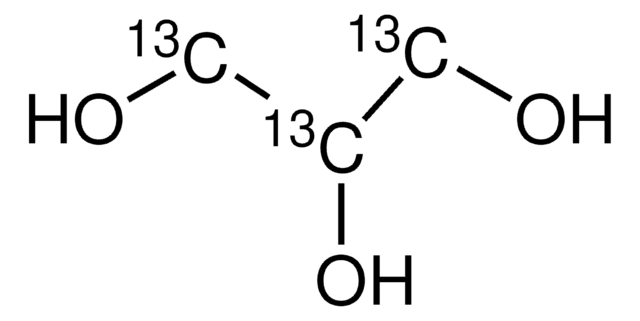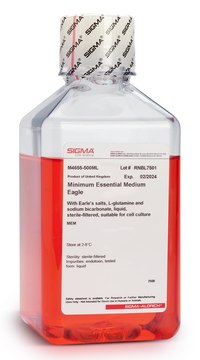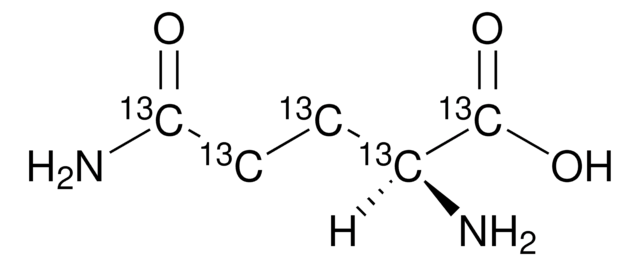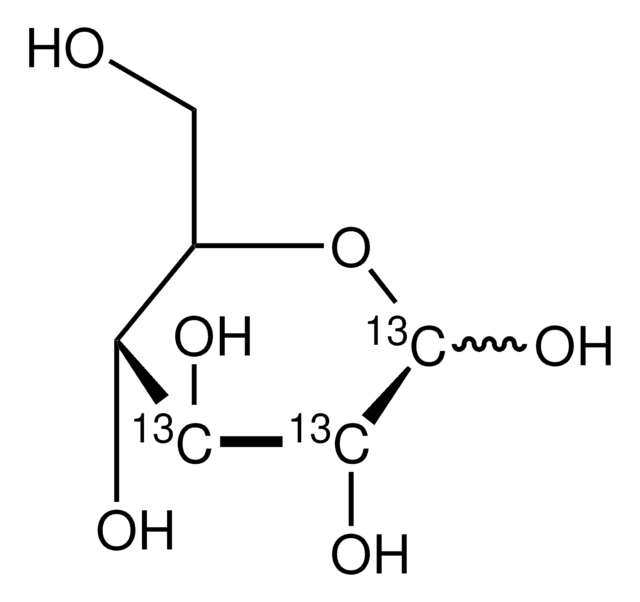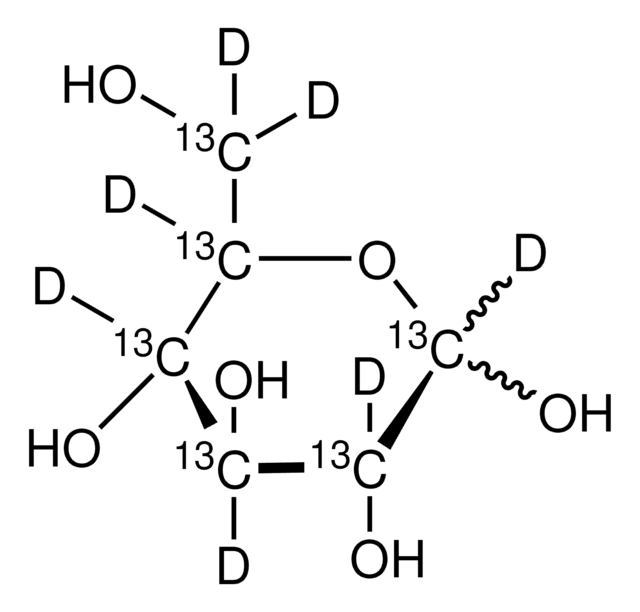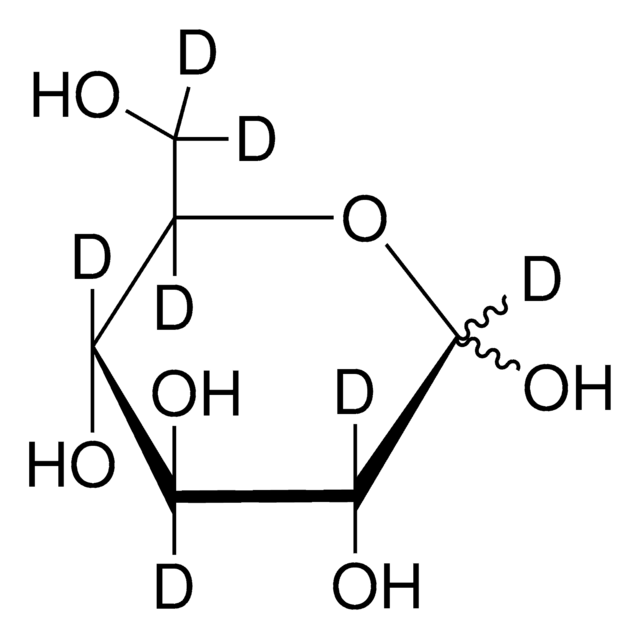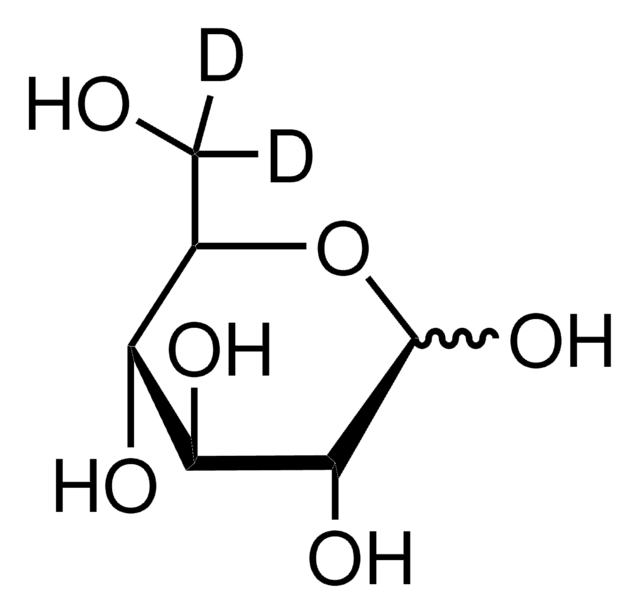453196
D-Glucose-1,6-13C2
≥99 atom % 13C, ≥99% (CP)
Synonyme(s) :
Labeled Glucose, Dextrose-1,6-13C2
About This Item
Produits recommandés
Pureté isotopique
≥99 atom % 13C
Niveau de qualité
Essai
≥99% (CP)
Forme
powder
Activité optique
[α]25/D +52.0°, c = 2 in H2O (trace NH4OH)
Pf
150-152 °C
Changement de masse
M+2
Chaîne SMILES
O[13CH2][C@@H]1O[13CH2][C@@H](O)[C@H](O)[C@H]1O.O
InChI
1S/C6H12O6/c7-1-3(9)5(11)6(12)4(10)2-8/h1,3-6,8-12H,2H2/t3-,4+,5+,6+/m0/s1/i1+1,2+1
Clé InChI
GZCGUPFRVQAUEE-OFAMVBKFSA-N
Conditionnement
Code de la classe de stockage
11 - Combustible Solids
Classe de danger pour l'eau (WGK)
WGK 1
Point d'éclair (°F)
Not applicable
Point d'éclair (°C)
Not applicable
Équipement de protection individuelle
Eyeshields, Gloves, type N95 (US)
Faites votre choix parmi les versions les plus récentes :
Déjà en possession de ce produit ?
Retrouvez la documentation relative aux produits que vous avez récemment achetés dans la Bibliothèque de documents.
Les clients ont également consulté
Articles
Isotopic Labeling for NMR Spectroscopy of Biological Solids;
Learn about monosaccharide biosynthesis and the metabolism of monosaccharides. A unit of a carbohydrate and the simplest form of a sugar, a monosaccharide cannot be hydrolyzed into a simpler compound.
Review the 10 steps of glycolysis in the Embden-Meyerhof-Parnas glycolytic pathway. Easily compare reaction stages and buy the enzymes for your life science research.
Dynamic Nuclear Polarization (DNP) is a phenomenon by which high spin polarization, typically derived from a bath of free radical electrons, is transferred to a nuclear spin bath, enhancing the difference between the nuclear energy levels and thereby producing dramatically enhanced NMR signals for detection.
Notre équipe de scientifiques dispose d'une expérience dans tous les secteurs de la recherche, notamment en sciences de la vie, science des matériaux, synthèse chimique, chromatographie, analyse et dans de nombreux autres domaines..
Contacter notre Service technique